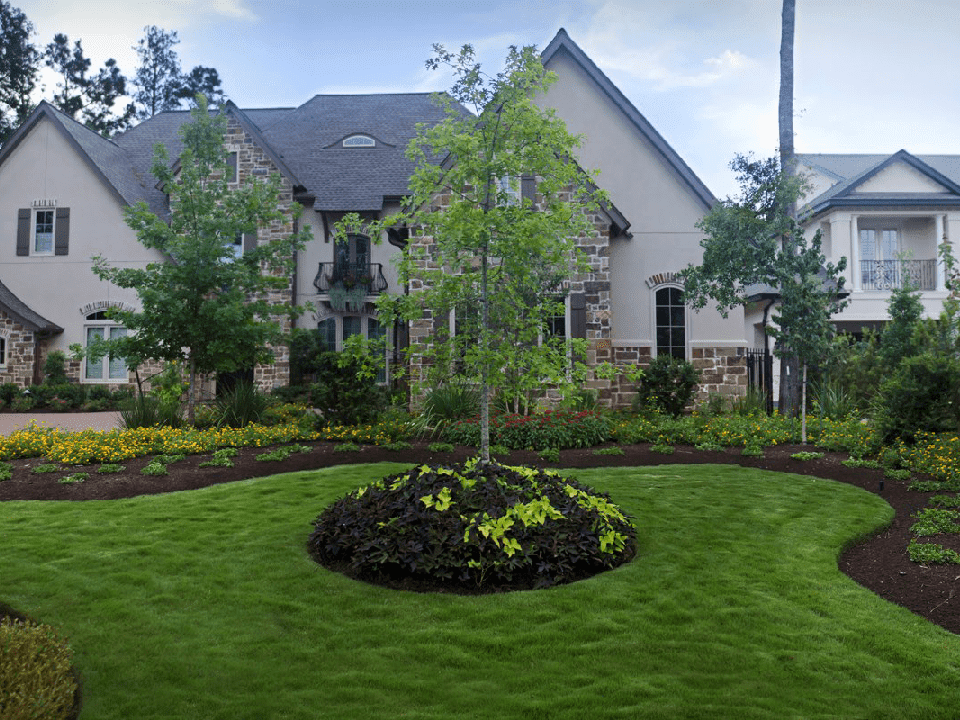Little Known Facts About Hilton Head Landscapes.
Little Known Facts About Hilton Head Landscapes.
Blog Article
The Main Principles Of Hilton Head Landscapes
Table of ContentsSome Known Facts About Hilton Head Landscapes.The Best Strategy To Use For Hilton Head LandscapesHow Hilton Head Landscapes can Save You Time, Stress, and Money.The Main Principles Of Hilton Head Landscapes Hilton Head Landscapes for BeginnersSome Known Questions About Hilton Head Landscapes.The Best Guide To Hilton Head Landscapes
Line creates all kinds and patterns and can be made use of in a variety of methods the landscape. Line in the landscape is developed by the side in between two products, the outline or shape of a type, or a long straight attribute. Lines are an effective device for the designer since they can be made use of to create a limitless variety of shapes and kinds, and they manage activity of the eye and the body.

Lines in the landscape. The residential or commercial properties of lines establish exactly how people react to the landscape, both mentally and physically.
Hilton Head Landscapes for Beginners
Straight lines are usually found in hardscape sides and product. Curved lines create an informal, all-natural, loosened up character that is linked more with nature and unbalanced balance. Curved lines move the eye at a slower pace and add mystery to the room by producing hidden views. Upright lines relocate the eye up, making a space really feel bigger.
Vertical lines in the landscape consist of high, slim plant product, such as trees, or tall frameworks, such as an arbor or a bird residence on a post. Straight lines move the eye along the ground aircraft and can make an area really feel bigger. Low lines are extra restrained and create a sensation of rest or repose.
Examine This Report about Hilton Head Landscapes
Reduced lines are produced by reduced garden walls, sidewalks, and short hedges. Lines are used to attract types on a strategy. In strategy view, they define plant beds and hardscape locations. Lines are also created by the vertical forms of built functions and plant product. There are three key line types that develop type in the landscape: bedlines, hardscape lines, and plant lines.
Bedlines connect plant material to the residence and hardscape since the eye follows the line, moving the gaze through the landscape. Hardscape lines are developed by the edge of the hardscape, which delineates the developed structure. Line can additionally be created by lengthy and narrow materials, such as a fence or wall surface.
9 Simple Techniques For Hilton Head Landscapes
Form is discovered in both hardscape and plants, and it is normally the dominant visual aspect that spatially arranges the landscape and commonly establishes the design of the yard. The kind of structures, plant beds, and garden accessories also identifies the general form motif of the yard. Official, geometric kinds include circles, squares, and polygons.
Plants create kind in the garden with their outlines or silhouettes, but form can additionally be defined by a gap or adverse area between plants - Landscaping bluffton sc (https://www.edocr.com/v/n3mz8xkl/stevenagonzales/hilton-head-landscapes). Circles can be cycles, or they can be divided right into half circles or circle sectors and combined with lines to create arcs and tangents
6 Easy Facts About Hilton Head Landscapes Described
Circles can likewise be stretched into ovals and ellipses for even more range and rate of interest. Circles are a strong layout type since the eye is always attracted to the facility, which can be used to stress a prime focus or connect other types. Number 2. Circular types in hardscape and lawn panels.
The square form can likewise be fractional and secondhand consistently to develop a grid pattern. Unlike circles, squares are stronger on the sides, which can be lined up or overlapped to create one-of-a-kind patterns and more complicated types.
Meandering lines commonly mimic the all-natural course of rivers or streams and can be defined as smooth lines with deeply bent undulations. Meandering lines (Figure 3) function well for pathways, plant bedlines, and dry stream beds. Twisting lines can add rate of interest and enigma to a garden by leading visitors around corners to discover new sights and areas.
A Biased View of Hilton Head Landscapes

Figure 5. Fragmented sides: tipping rocks in pathway. Type is one of the most long-lasting high quality of a plant (Landscaping bluffton sc). https://hub.docker.com/u/h1tnhdlndscps. Common plant types are well developed and standardized, as form is the most consistent and recognizable quality of plants. Form can additionally be created through the massing of plants, where the total mass develops a different form than a specific plant.
An extremely different form must be used with careone or more work well as a focal factor, but also many wreak havoc. Natural plant forms, instead of over-trimmed types, need to establish the mass of the composition. The importance of general form is basically dependent on the viewing perspectivethe form of a tree can show up quite different to a person standing under the cover versus viewing the tree from a range in an open area.
Some Known Questions About Hilton Head Landscapes.
Plant kinds likewise develop and specify the void or open spaces in between the plants, creating either convex or scooped kinds in deep spaces. High-arching tree branches generally develop a concave open room under the branches, and a rounded canopy with reduced branches loads the room to create a convex type in the open space under the tree.

Report this page